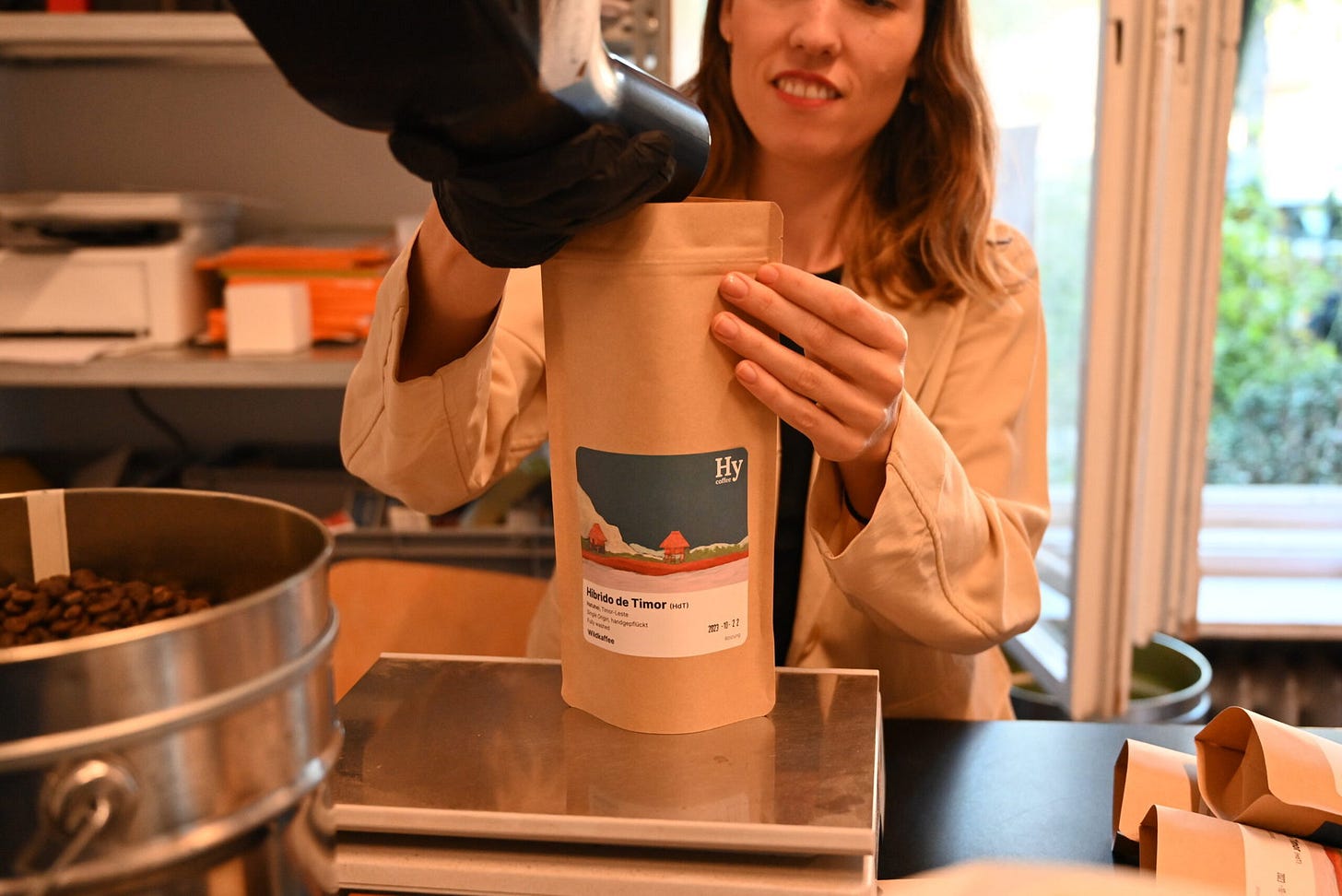Dear Solution-aries,
This newsletter comes a little later than usual because… I wrote another book. Well, I finished the manuscript. It will probably take about two years before you can read the book on your e-reader or find it in a book store, but if you want a sneak peek: I’ll send some chapters to paid subscribers starting in January. The story details the journey of a young reporter who gives up her job and follows her heart to study Buddhism in Asia – only to learn that she unwittingly joined a criminal operation. If this sounds suspiciously familiar to my own biography, I can tell you the book originally started as a memoir project, but I have fictionalized it and turned it into a novel. My debut novel! I’m excited to send it into the world.
As far as my journalism work goes, I was rather worried when I learned my morning coffee is threatened by climate change. So I researched solutions:
Climate Change Is Coming for Your Coffee. Could Genetic Diversity Save It?
If you love your morning coffee, this news should jolt you wide awake: Your coffee is threatened by climate change. “The consequences are already palpable,” says climate scientist Sophie von Loeben. You may have already noticed the hole in your wallet, because coffee prices have roughly doubled over the last 10 years.
Half of the current cultivation areas will no longer be suitable for coffee by 2050. This is about more than your cup of joe: 100 million people earn their living through cultivating, harvesting or selling coffee, and the effects of climate change will impact small growers the most.
One solution is to foster more genetic diversity, especially wild coffee species that are more robust and resistant to rising temperatures, drought, and pests. In 2019, while von Loeben was working for the United Nations, she was sent to Timor-Leste, an independent state formerly occupied by Indonesia, to help local farmers develop a climate strategy for the drought. She fell in love with the country and noticed that one climate- and disease-resistant solution to the emerging coffee crisis was growing wild in the forests: Hibrido de Timor, a spontaneous hybrid of arabica and robusta that developed naturally. She and her partner are now importing Hibrido to Europe, among other beans.
To be honest, until I spoke with Sophie, I hadn’t given much thought to how my coffee was grown and its colonial history. Now I do.
80 percent of all coffee farms are small farms, less than five acres in size. Despite coffee being one of the most valuable global commodities, 44 percent of the world’s coffee farmers live in poverty. “If you want to support them, buy your coffee from small roasters who are in direct contact with the farmers,” von Loeben advises. A third of these farmers earn less than $100 per year from coffee production.
Given that the world consumes 500 billion cups of coffee, or 22 billion tons of coffee beans, every year, it’s worth paying attention.
“The point is to build more resilient systems for the farmers,” von Loeben says. “And to create awareness when people drink their cup of coffee. Where did it come from? Did it hurt or help the planet and the people who grew it?”
I’m now buying my coffee from small roasters, sustainably grown. For instance, I discovered this one that doesn’t break the bank: Kogi Coffee from the Younger Brothers.
(This is not a promotion, I’m getting no deal from that, I just genuinely like it.)
And other outlets are focusing on climate solutions too. Did you see that the New York Times has started a new series of solutions reporting? Check out Climate Fix, Solutions for a Warming World!
Cheerfully,
Michaela


